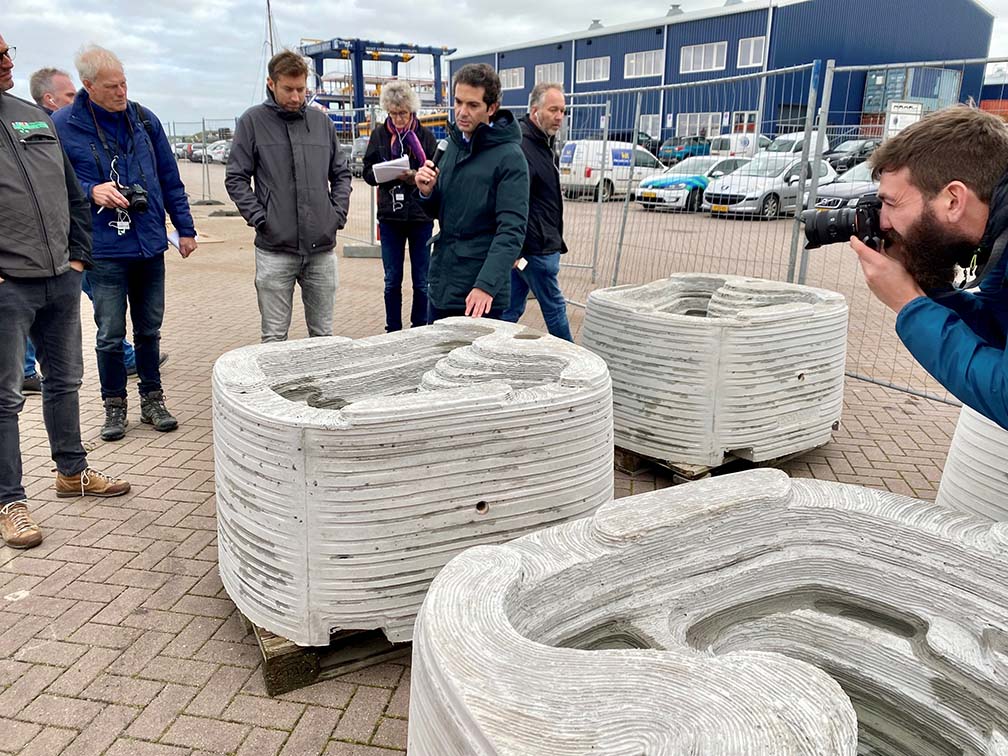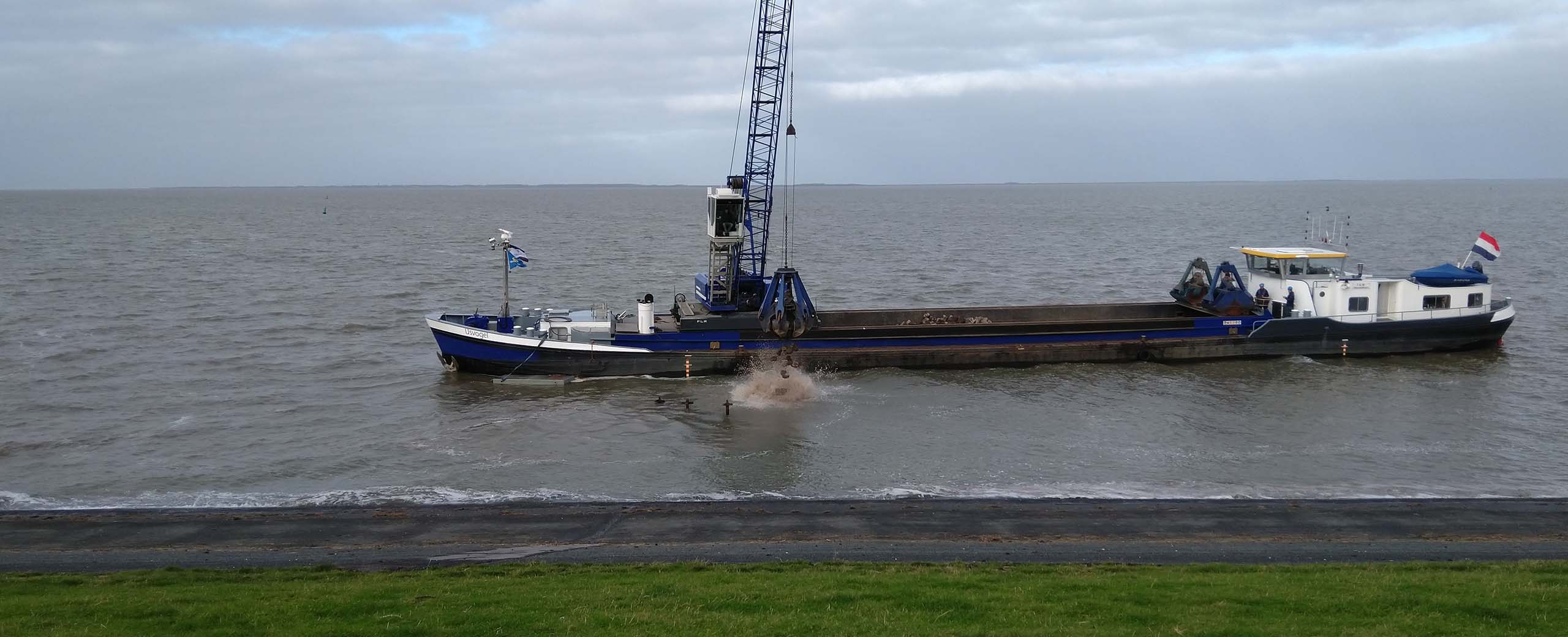Unique pilot in the Wadden Sea: large-scale trial for underwater nature
On Monday, November 8, a unique trial began in the Wadden Sea, on the Groningse Lauwersmeerdijk. Over the next three years, a pilot program will test how underwater nature at the foot of the dike can be best enriched. Ten different ecological technologies and artificial reef structures will be installed for the pilot, three of which are ECOncrete’s technologies. ECOncrete concrete armor blocks, tide pool armor, and articulated concrete block mattresses will be providing structural support for the dike’s riprap and toe, while serving a platform for biodiverse marine life to grow.
This pilot is the first large-scale trial carried out on a dike in the Wadden Sea. An underwater nature trial of this scale provides new insights to improve water quality and nature in the Wadden Sea. By enabling the ecosystem to recover, the structure and the communities it protects can become more resilient to the effects of climate change.

ECOncrete’s global head of engineering, Jorge Gutiérrez Martínez at the site visit, with tide pools
Unique Trial with Reef Elements and Tide Pools
The Netherlands have built dikes to protect the country against flooding. As a result, the gradual transition between mudflats and land has disappeared, and been replaced with hard edges. This transitions comes with negative consequences for water quality and nature.
The Noorderzijlvest water board is involved in strengthening the Lauwersmeerdijk in Groningen working with its partners on infrastructure for nature on and around the dike. Part of this infrastructure is the underwater nature enhancement structures at the foot (toe) of the dike. This test is unique as no less than ten different reef and structural elements are incorporated at different locations and depths.
Structures like modified artificial hard dikes can fulfill an even better function for organisms in the Wadden Sea. Artificial reef elements and structurally supportive tidal pools, provide hiding, resting and spawning places for different marine species, such as fish. Shellfish, mollusks, and algae also benefit from these structures, they can attach and thus create more biodiversity and productivity. The sedentary species that make this project their home can even help strengthen the concrete, with a buffering layer of calcitic armor from barnacle or clam shells, while storing carbon as species like oysters or limpets grow their skeletons.
Outcome of importance for the entire Wad
University of Groningen and Van Hall Larenstein University of Applied Sciences will monitor progress through research. The results of the research will be used to inform the final design of the new Lauwersmeerdijk with a reef at its toe. Research also has a broader role, and will provide more insight into the effects of the reef elements and tidal pools in the Wadden Sea.
The study will investigate which species settle on which structures and to what extent they enrich the Wadden ecosystem. This information can be applied to future projects around the Wadden, such as with other dike reinforcements or adaptations of other artificial hard structures in the Wadden Sea. The trial will show how the increase in habitats and connections between the mudflats and the land near the dike can best be realized. As a result, the dike contributes to achieving the nature objectives for the Wadden area and making the ecosystem more robust.

ECOncrete’s global head of engineering, Jorge Gutiérrez Martínez at the site visit, with marine mattresses
Cooperation
The trial was realized within a special collaboration. Noorderzijlvest water board is the client for the test, and partners are Het Groninger Landschap, Rijkswaterstaat Northern Netherlands, municipality of Het Hogeland, province of Groningen, engineering firm Arcadis and a Waddenkwartier contractor combination (Heijmans and GMB). The project is co-financed by the Wadden Fund and the Programmatic Approach to Large Waters. The suppliers of the infrastructure are ECOncrete Tech, Reefsystems and Moreef. Van Hall Larenstein and University Groningen monitor and research ecological development.
Blog adapted from project press release.
